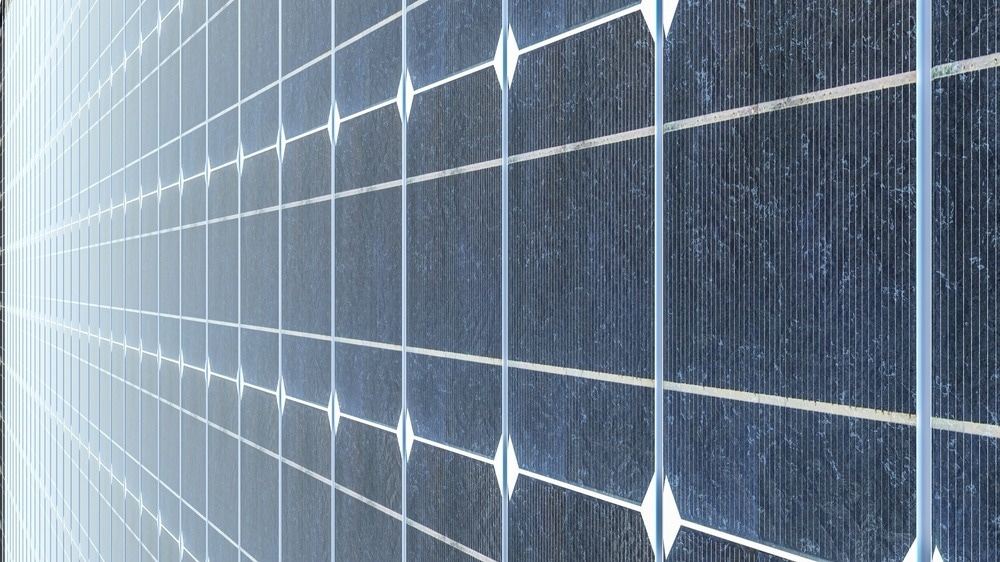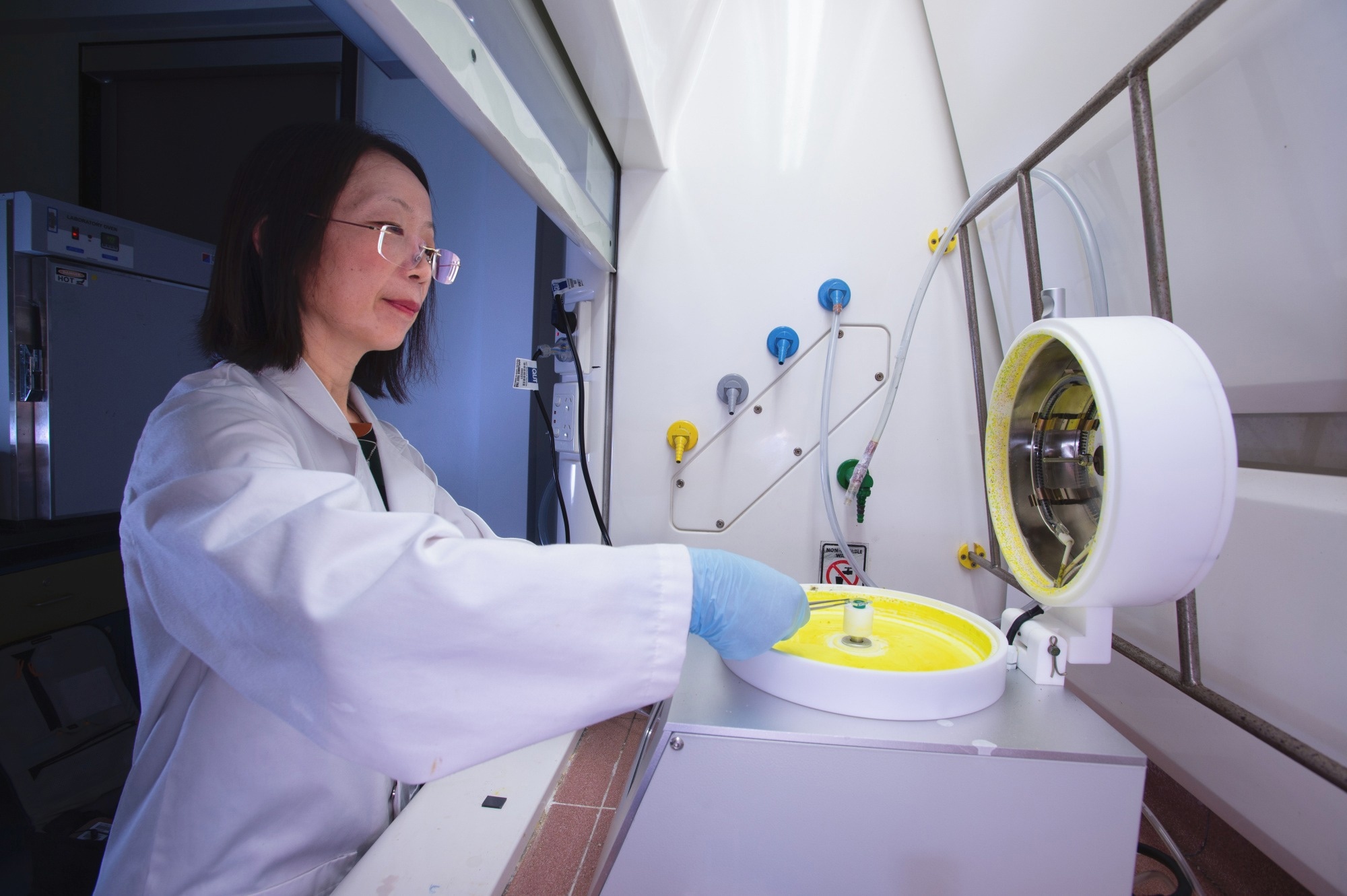We speak with Professor Hongxia Wang from QUT about a new project that hopes to utilize graphene and other low-cost carbon materials to produce commercially viable, ultra low-cost, flexible perovskite solar cells. The project involves industry partners First Graphene and Halocell Industry and has been awarded funding from the Australian government’s Cooperative Research Centres Project.
Please could you introduce yourself and your current research activities?
I am a Professor in the School of Chemistry and Physics, Faculty of Science, Queensland University of Technology, and I am also part of the Centre for Materials Science. I am a chemist and condensed matter Physicist by training. My current research is primarily focused on the development of a low-cost route (materials and process) for next-generation solar cells, such as perovskite solar cells and energy storage devices, such as batteries and supercapacitors.
When did you become interested in studying energy storage and conversion materials, and more specifically, solar cells?
It has been just over 20 years since I began to study energy storage and conversion materials, more specifically, solar cells, in 2002 as part of my Ph.D. project. During this time, I designed and prepared solid-sate electrolyte materials for dye-sensitized solar cells, addressing the critical practical issues of this type of solar cells, such as leakage of conventional liquid electrolytes.

Image Credit: Audio und werbung/Shutterstock.com
What are some of the drawbacks associated with conventional solar cells?
Conventional solar cells, such as the commercially available crystalline silicon, dominate the current PV market. While the price of silicon solar cells is already relatively low, its efficiency is already approaching its theoretical energy conversion limit for a single junction device, as determined by the Mott-Schottky equation.
The drawbacks of silicon solar cells also include:
- Weak light absorption of silicon.
- Requirement of energy-intensive vacuum equipment to make high-purity silicon (exceeds 99.9999% to achieve optimal efficiency and performance).
All these drawbacks not only increase the cost but also make it practically challenging to make flexible solar cells to meet the increasing power supply demand for portable and flexible electronics.
How can perovskite solar cells help to address these problems?
One of the advantageous features of perovskite solar cells is their high energy conversion efficiency achieved by solution processing fabrication methods. The metal halide based perovskite light-absorbing semiconductor material has a high light absorption coefficient (>10 times higher than silicon) and is very tolerant to defects. Therefore, it can be made on a flexible substrate at low temperatures using a low-cost deposition process such as roll-to-roll (R2R) printing.
Another advantage of the metal halide perovskite is that the material can offer variable bandgap in a broad spectral range (from UV to near Infrared). This makes them suitable for tandem solar cells in combination with another light absorber with complimentary light absorption, such as silicon, or another perovskite.
Could you discuss your latest partnership involving solar cells and who you will be working with? How was the project created, and what are its main goals?
The Cooperative Research Centres Project (CRC-P project) is funded by the Australian government. According to the guidelines of the CRC-P, it must
- Develop a product, service or process that will solve problems for industry and deliver real outcomes.
- Benefit small to medium enterprises (SMEs).
- Include education and training activities.
Since Halocell/Greatcell Energy and First Graphene have shared a mutual interest in the production of perovskite solar cells, it was natural for us to form a partnership in the project to develop ultra-low-cost solar cells based on perovskite solar cell technology.
Do you think the direct involvement of industry leaders will boost the success of the project?
To facilitate the commercialization of any new technologies, such as perovskite solar cells, researchers like myself must collaborate with industry leaders to understand the practical feasibility and limitations of new processes or new materials that are developed in research laboratories.

Professor Hongxia Wang is working on a project to produce ultra-low cost, flexible perovskite solar cells. Image Credit: QUT
One of the key materials to be utilized in this project is graphene. Could you discuss the current landscape for graphene and other carbon-based materials in solar cell technology?
Graphene is an allotrope of carbon. Because of its excellent conductivity, researchers have used it in perovskite solar cells to improve the device’s performance and stability.
In this project, we will develop an efficient carbon electrode to replace the expensive metal electrode, such as gold, for perovskite solar cells using graphene and other types of cheap carbon materials, such as graphite and carbon black. We believe this is important for the large-scale production of perovskite solar cells.
Are there any instruments or analysis techniques that will be integral to this project? Why are they so important?
This R&D project will involve a broad range of spectroscopic and microscopic analysis techniques like SEM, XRD, XPS, UV-Vis, and rheometers to measure the physical and chemical properties of the materials, such as work function, surface wettability, processibility, and surface morphology. These important parameters determine the performance of the solar cells using the materials.
Where can our readers go to stay up to date with the project and your research activities?
I usually update my research activities through a few platforms, such as my Group webpage, Google Scholar page and my LinkedIn.
About Prof. Hongxia Wang
 Hongxia Wang is a full professor in the School of Chemistry and Physics and is part of the Centre for Materials Science at Queensland University of Technology, Australia. Her research primarily focuses on the development of new routes to enhance the performance and stability of 3rd generation solar cells and energy storage devices, including sensitized solar cells, perovskite solar cells, CZTS-based thin-film solar cells, supercapacitors, and batteries. With over 190 peer-reviewed scientific articles and two book chapters published to date, she has made significant contributions to the field.
Hongxia Wang is a full professor in the School of Chemistry and Physics and is part of the Centre for Materials Science at Queensland University of Technology, Australia. Her research primarily focuses on the development of new routes to enhance the performance and stability of 3rd generation solar cells and energy storage devices, including sensitized solar cells, perovskite solar cells, CZTS-based thin-film solar cells, supercapacitors, and batteries. With over 190 peer-reviewed scientific articles and two book chapters published to date, she has made significant contributions to the field.
Hongxia Wang is also recognized as the inventor of four patents in the area of energy materials and applications. Her notable professional affiliations include being a Fellow of the Royal Society of Chemistry (FRSC) and a Fellow of the Royal Australian Chemical Institute (FRACI).
She has received prestigious accolades throughout her career, such as the "Solar Energy Journal Best Paper Award for 2016 in the topic of Photovoltaics" by the International Solar Energy Society and the "Best Research Paper Award in Manufacturing and Material Science" by the China Association for Science and Technology in 2023. Her exceptional achievements have been acknowledged with various fellowships, including the "Australian Research Council (ARC) Future Fellowship," the "ARC Postdoctoral Fellowship (Industry, APDI)," and the "Queensland University of Technology Vice-Chancellor Research Fellow."
In recognition of her impactful research, Hongxia Wang was honored with the QUT's "Vice-Chancellor's Performance Award for Best Research with Real-World Impact" in 2015 and 2017, respectively.
Disclaimer: The views expressed here are those of the interviewee and do not necessarily represent the views of AZoM.com Limited (T/A) AZoNetwork, the owner and operator of this website. This disclaimer forms part of the Terms and Conditions of use of this website.